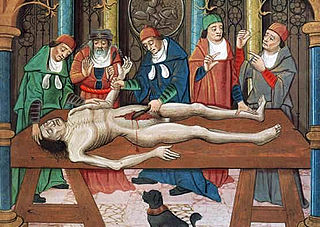
The history of anatomy extends from the earliest examinations of sacrificial victims to the sophisticated analyses of the body performed by modern anatomists and scientists. Written descriptions of human organs and parts can be traced back thousands of years to ancient Egyptian papyri, where attention to the body was necessitated by their highly elaborate burial practices.

The history of anatomy in the 19th century saw anatomists largely finalise and systematise the descriptive human anatomy of the previous century. The discipline also progressed to establish growing sources of knowledge in histology and developmental biology, not only of humans but also of animals.

Bartolomeo Eustachi, also known by his Latin name of Bartholomaeus Eustachius, was an Italian anatomist and one of the founders of the science of human anatomy.

Mondino de Luzzi, or de Liuzzi or de Lucci,, also known as Mundinus, was an Italian physician, anatomist and professor of surgery, who lived and worked in Bologna. He is often credited as the restorer of anatomy because he made seminal contributions to the field by reintroducing the practice of public dissection of human cadavers and writing the first modern anatomical text.
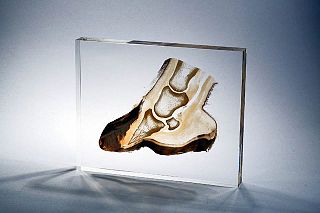
Plastination is a technique or process used in anatomy to preserve bodies or body parts, first developed by Gunther von Hagens in 1977. The water and fat are replaced by certain plastics, yielding specimens that can be touched, do not smell or decay, and even retain most properties of the original sample.
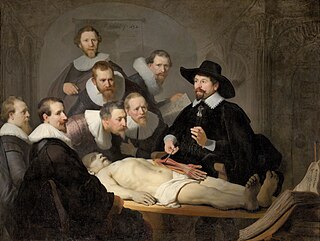
An autopsy is a surgical procedure that consists of a thorough examination of a corpse by dissection to determine the cause, mode, and manner of death; or the exam may be performed to evaluate any disease or injury that may be present for research or educational purposes. For animals, the term necropsy is generally reserved.

Dissection is the dismembering of the body of a deceased animal or plant to study its anatomical structure. Autopsy is used in pathology and forensic medicine to determine the cause of death in humans. Less extensive dissection of plants and smaller animals preserved in a formaldehyde solution is typically carried out or demonstrated in biology and natural science classes in middle school and high school, while extensive dissections of cadavers of adults and children, both fresh and preserved are carried out by medical students in medical schools as a part of the teaching in subjects such as anatomy, pathology and forensic medicine. Consequently, dissection is typically conducted in a morgue or in an anatomy lab.

Body snatching is the illicit removal of corpses from graves, morgues, and other burial sites. Body snatching is distinct from the act of grave robbery as grave robbing does not explicitly involve the removal of the corpse, but rather theft from the burial site itself. The term 'body snatching' most commonly refers to the removal and sale of corpses primarily for the purpose of dissection or anatomy lectures in medical schools. The term was coined primarily in regard to cases in the United Kingdom and United States throughout the 17th, 18th, and 19th centuries. However, there have been cases of body snatching in many countries, with the first recorded case dating back to 1319 in Bologna, Italy.
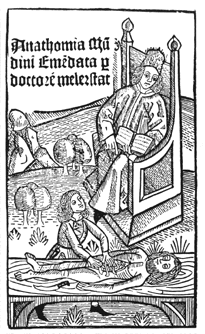
A prosector is a person with the special task of preparing a dissection for demonstration, usually in medical schools or hospitals. Many important anatomists began their careers as prosectors working for lecturers and demonstrators in anatomy and pathology.

Hull York Medical School (HYMS) is a medical school in England which took its first intake of students in 2003. It was opened as a part of the British Government's attempts to train more doctors, along with Brighton and Sussex Medical School, Peninsula Medical School and University of East Anglia Medical School.

The Anatomy Lesson of Dr. Nicolaes Tulp is a 1632 oil painting on canvas by Rembrandt housed in the Mauritshuis museum in The Hague, the Netherlands. It was originally created to be displayed by the Surgeons Guild in their meeting room. The painting is regarded as one of Rembrandt's early masterpieces.

Medical jurisprudence or legal medicine is the branch of science and medicine involving the study and application of scientific and medical knowledge to legal problems, such as inquests, and in the field of law. As modern medicine is a legal creation, regulated by the state, and medicolegal cases involving death, rape, paternity, etc. require a medical practitioner to produce evidence and appear as an expert witness, these two fields have traditionally been interdependent.
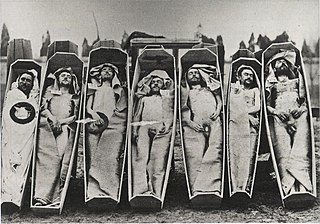
A cadaver or corpse is a dead human body. Cadavers are used by medical students, physicians and other scientists to study anatomy, identify disease sites, determine causes of death, and provide tissue to repair a defect in a living human being. Students in medical school study and dissect cadavers as a part of their education. Others who study cadavers include archaeologists and arts students. In addition, a cadaver may be used in developing and the evaluation of surgical instruments.
Anatomy for Beginners is a television show created by Gunther von Hagens.
A prosection is the dissection of a cadaver or part of a cadaver by an experienced anatomist in order to demonstrate for students anatomic structure. In a dissection, students learn by doing; in a prosection, students learn by either observing a dissection being performed by an experienced anatomist or examining a specimen that has already been dissected by an experienced anatomist
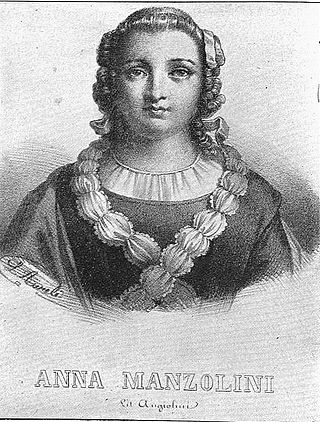
Anna Morandi Manzolini was an internationally known anatomist and anatomical wax modeler, as lecturer of anatomical design at the University of Bologna.

Gunther von Hagens is a German anatomist who invented the technique for preserving biological tissue specimens called plastination. He has organized numerous Body Worlds public exhibitions and occasional live demonstrations of his and his colleagues' work, and has traveled worldwide to promote its educational value. The sourcing of biological specimens for his exhibits has been controversial, but he insists that informed consent was given before the death of donors, and extensive documentation of this has been made available.
An anatomy murder is a murder committed in order to use all or part of the cadaver for medical research or teaching. It is not a medicine murder because the body parts are not believed to have any medicinal use in themselves. The motive for the murder is created by the demand for cadavers for dissection, and the opportunity to learn anatomy and physiology as a result of the dissection. Rumors concerning the prevalence of anatomy murders are associated with the rise in demand for cadavers in research and teaching produced by the Scientific Revolution. During the 19th century, the sensational serial murders associated with Burke and Hare and the London Burkers led to legislation which provided scientists and medical schools with legal ways of obtaining cadavers. Rumors persist that anatomy murders are carried out wherever there is a high demand for cadavers. These rumors, like those concerning organ theft, are hard to substantiate, and may reflect continued, deep-held fears of the use of cadavers as commodities.
As anatomy classes in medical education proliferated in the 19th century, so too did the need for bodies to dissect. Grave robbery proliferated, along with associated social discontent, revulsion, and unhappiness. Conflicts arose between medical practitioners and defenders of bodies, graves and graveyards. This resulted in riots. Social legislation was passed in many countries to address the competing concerns.














